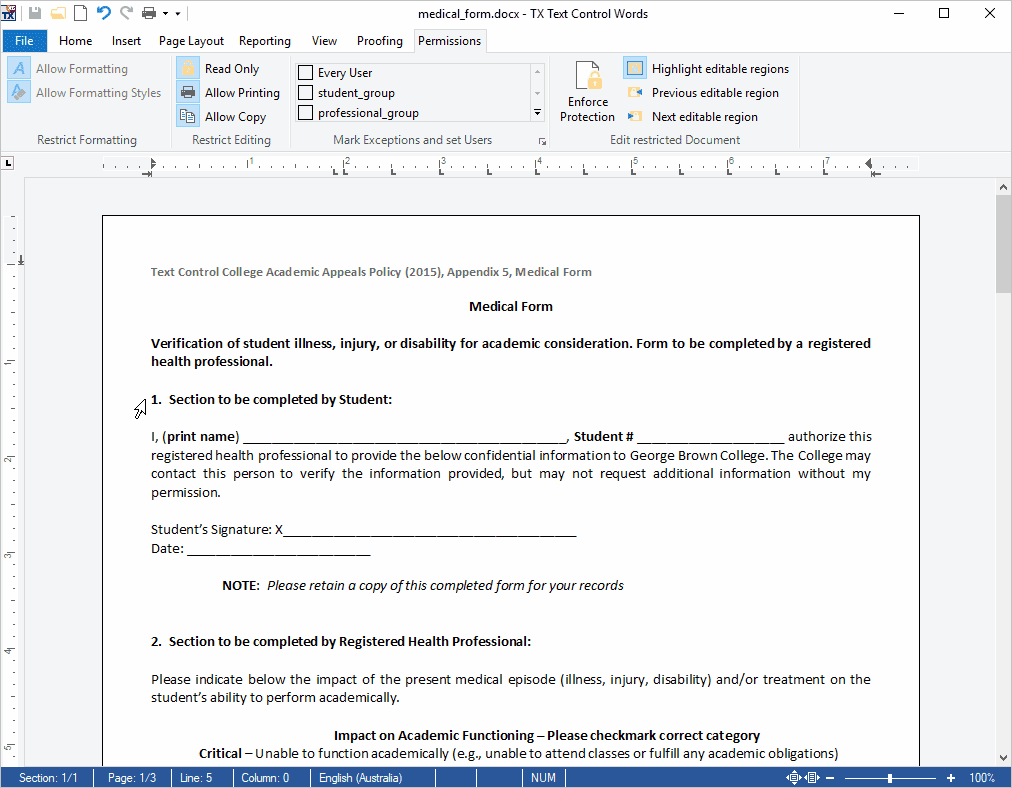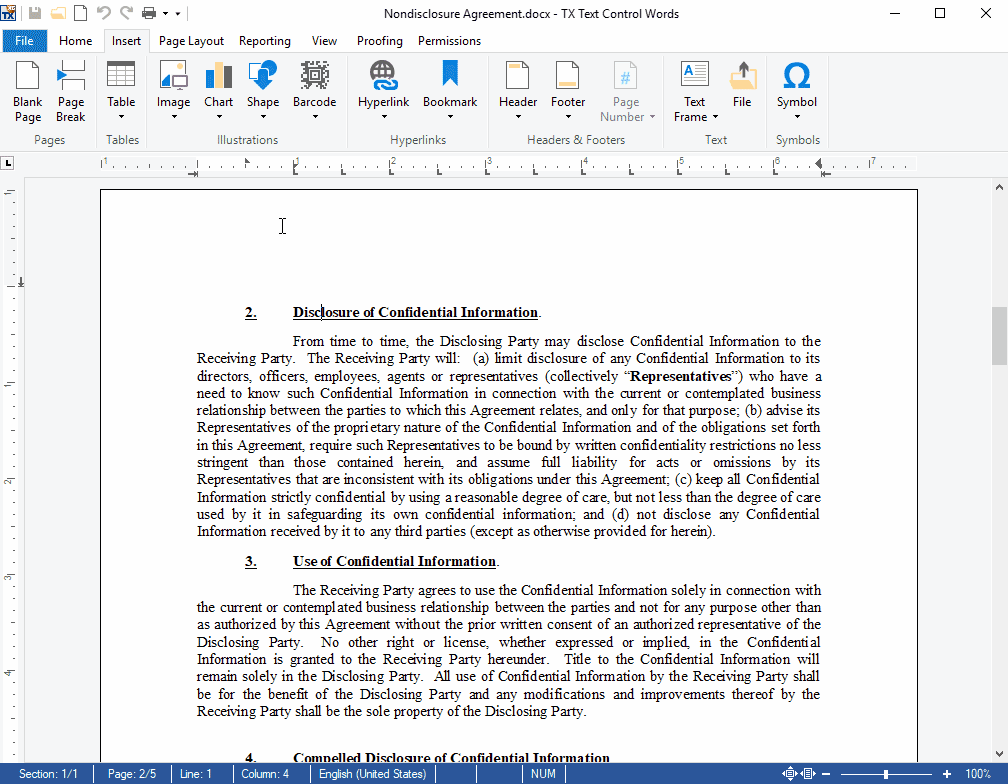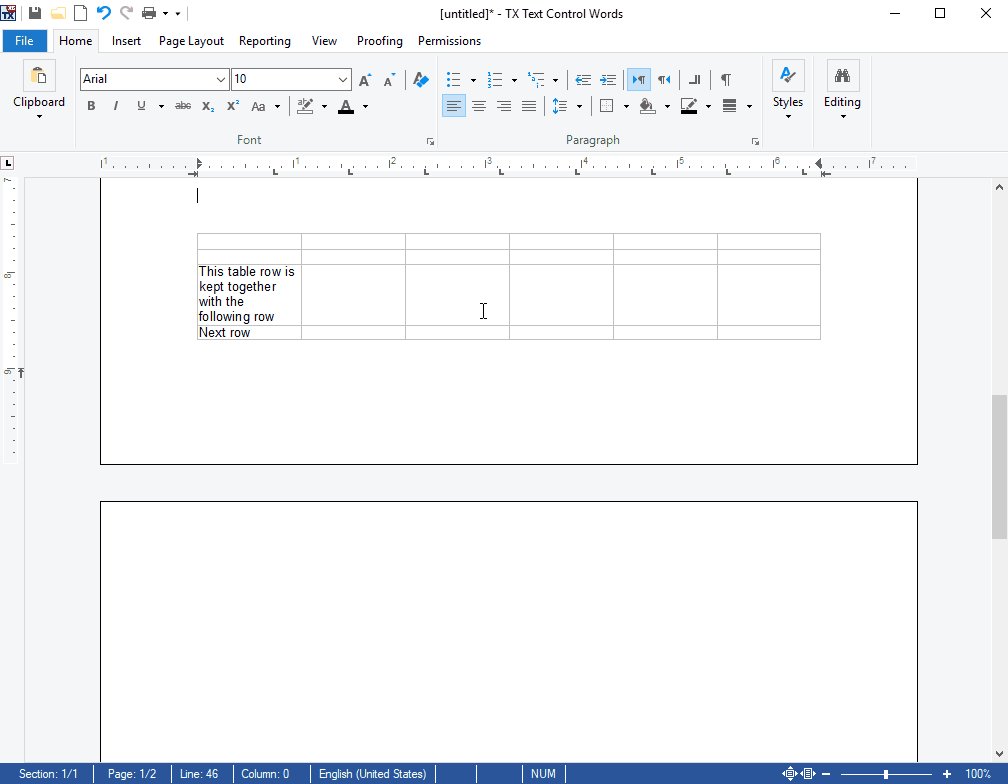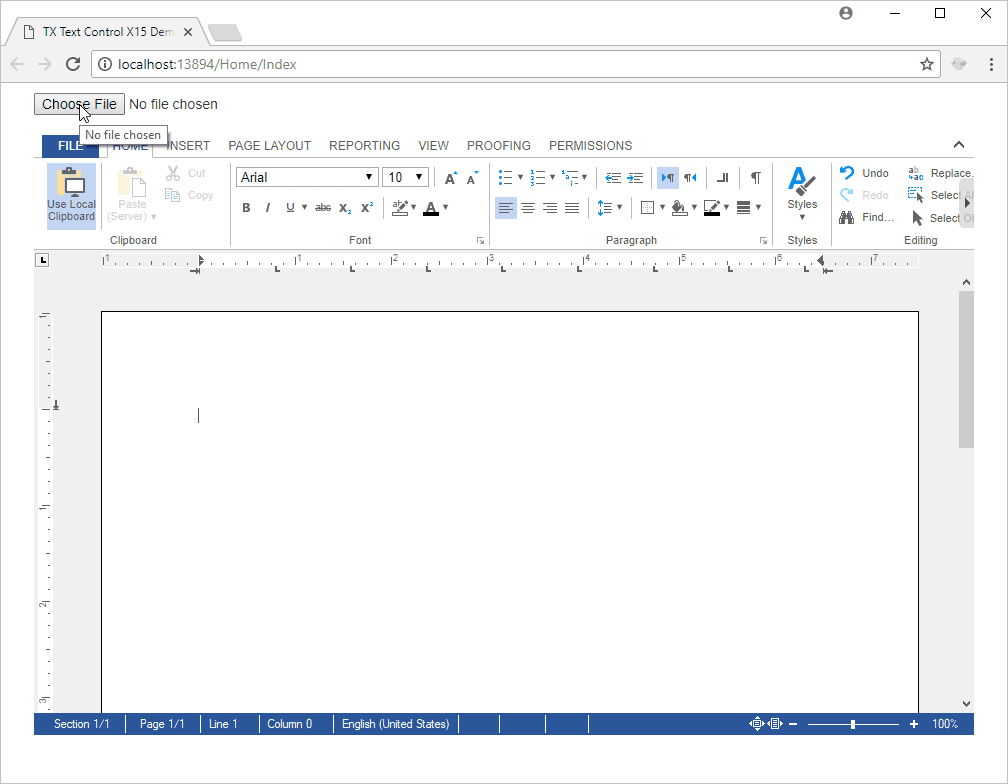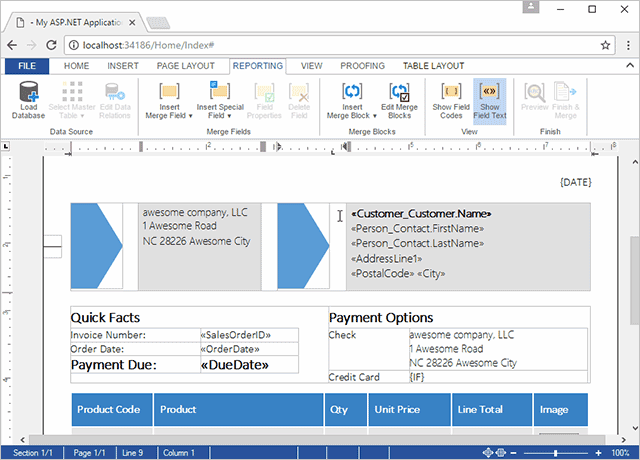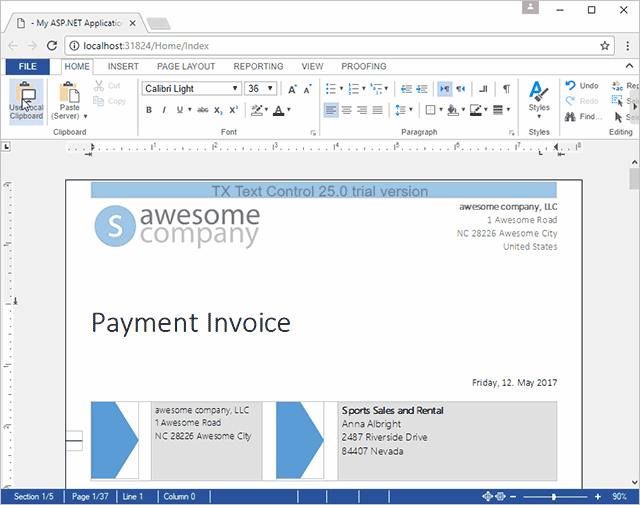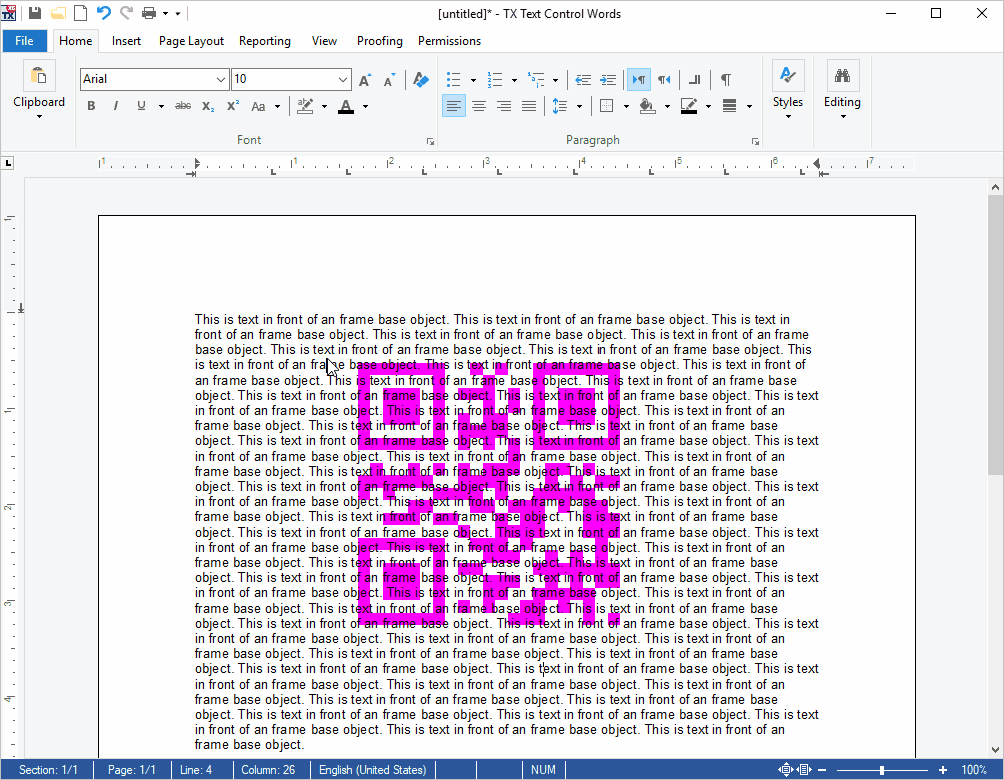What's New in X15
We are constantly updating our libraries with major upgrades, new features, and innovations driven by our customers.
Watermarks
Watermarks in headers and footers
Content in headers and footers can overlap main text. This is typically used in letterhead templates to place an address block in a text box on the side of the main text. This content is repeated on each page dependent of the header and footer section settings.MS Word-compatible document protection and editable regions
MS Word-compatible document protection with editable regions. Using TX Text Control .NET Server X15, documents can be protected by restricting the formatting and editing of content. When protecting a document, it is possible to define whether the document is completely locked or formatting can be applied.
Editable regions are exceptions within protected documents that can be defined through a start position and a length or through a TXText
Each TXText
Watermarks in headers and footers
Watermarks in headers and footers for letterhead templates. A highly requested feature was content in headers and footers that overlaps the main text. This is typically used in letterhead templates to place the address in a text box on the side of the main text. This content is repeated on each page and is therefore part of the header or footer text part.
Objects can be freely moved on the page and are placed behind the main text when headers and footers are deactivated. When a new page is inserted within the same section, the objects that belong to the header and footer are repeated on following pages as well.
Pagination in tables
Pagination in tables with control over page breaks. The pagination settings keep with next and page break before can now be used in tables to control page breaks within a table. The first paragraph of a table row determines how to treat the complete row. If the first paragraph of a table row has the keep with next setting, the complete table row is positioned on the same page as the following table row.
Inserting client-side images
Insert client-side images and TextFrames with enhanced JavaScript API. Using JavaScript API enhancements, client-side images can be added to documents. All supported image types can be added as Base64 encoded strings and inserted at character positions, anchored to paragraphs, or fixed on pages.
Additionally, TextFrames can be added programmatically using the same object positioning.
Custom field overlays
Display custom field overlays for MS Word-compatible forms. A highly requested feature for our HTML5-based Web.TextControl is the ability to show field overlays or custom elements such as HTML form elements on top of all types of fields. In version X15, fields provide their location using the bounds property that can be used to render a custom overlay at this location.
This concept can be used for many different applications including the rendering of form elements on top of MS Word form fields and content control fields. All of these fields are accessible in version X15 using the new TXTextControl.getTextFields method that returns an ApplicationField object. This allows the development of MS Word-compatible form completion applications based on Web.TextControl.
JavaScript API improvements
JavaScript API improvements for clipboard switching and text field manipulations. In version X15 of TX Text Control .NET Server, it is possible to switch between the two different clipboards using a toggle button or the JavaScript API.
Additionally, TX Text Control .NET Server provides a general interface to add, remove, and modify all text field types including MS Word merge fields, form fields, and TX Text Control text fields.
The JavaScript API allows manipulations of TXTextControl.SubTextPart objects. A SubTextPart object represents a user-defined part of a TX Text Control document.
Copy to local clipboard support
Support for switching between clipboards and copying to local clipboard. In version X15 of TX Text Control .NET Server, it is possible to switch between the two different clipboards using a toggle button or the JavaScript API. When the local clipboard is activated, an HTML form element is simulated, allowing content to be pasted into the control and copied from the control to the local clipboard.
Select objects behind the text
Select objects behind the text with the new TXTextControl.SelectObjects property. The new TXTextControl.SelectObjects property controls the selection of objects which are located behind the text.
When this property is set to True, a mouse click selects the object in the background. Otherwise, when this property is set to False, text in front of the object is selected.

